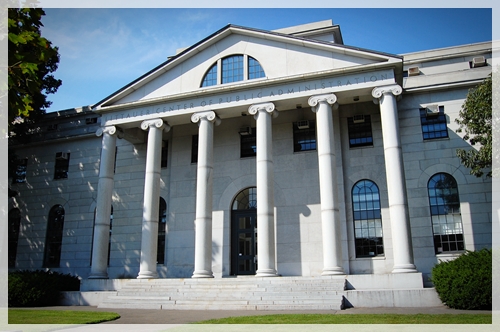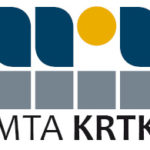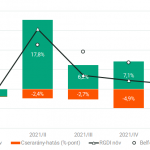DEPARTMENT OF ECONOMICS
GENERAL EXAMINATION
(Three hours)
Please note on the front cover of your bluebook the number of each question
upon which you write, in the order followed in your book, and HONORS or
NON-HONORS.
PART I
(One hour)
Economic Analysis
HONORS candidates answer ONE question taken from questions 1- 4.
l. “Depressions are caused by the exhaustion of investment opportunities
and the rigidity of saving.”
Discuss.
2. “Keynes’ theory may have undermined the neo-classical theory of the price level but it has left intact the neo-classical theory of relative prices.”
Discuss.
3. “The basic criteria of anti-trust policy with respect to product markets are the same whatever the competitive structure of labor markets may be.”
Discuss.
4. “Despite all the changes that have taken place in economic theory the
profit motive continues to occupy the central role which it had in Ricardo’s theory.”
Discuss the role of profit in (a) Ricardo, (b) neo-classical theory, (c) Schumpeter’s theory.
NON-HONORS candidates answer ONE question taken from questions 5-8.
5. “Future historians may well write the epitaph of our civilization as
follows:
From freedom and science came rapid growth and change.
From rapid growth and change came economic instability.
From instability came demands which ended growth and change.
Ending growth and change ended science and freedom.”
Discuss this alleged conflict between economic growth and measures to secure economic stability. In your answer refer to the views of some of the great economists, for example, Schumpeter and Keynes, on this problem.
6. In explaining business cycles most economists place crucial emphasis on
fluctuations in investment or capital goods.
Discuss the determinants of investment and the manner by which these factors operate upon investment to produce fluctuations in National Income.
7. The basic economic questions any society must somehow answer are:
( 1) What consumer and capital commodities shall be produced and in what
quantities?
(2) How shall the goods be produced, i.e., by whom and with what
resources?
(3) For whom are goods to be produced, i.e., how is the national
product to be distributed among individuals?
Outline the way in which these questions are answered in a perfectly competitive, free enterprise economy.
8. In addition to wages, interest, and rent, economists often talk about a
fourth category of income: profit. What do economists mean by this return?
What are the causes of profit and its function in a capitalistic system?
PART II
(Two hours)
All students are required to choose TWO of the four fields in Part II of
this examination and to answer two questions in each selected field. Thus a
total of four questions are to be answered in Part II with an allowance of
a half hour per question.
A. Economic History
9. “The very increases in the possibilities of unrestrained competition of the past seventy-five years, through developments in transport, technology, the size and organization of firms, etc. – may in themselves partly explain some of the restraints on price competition that have appeared in this century.”
Discuss both the developments and their alleged effects.
10. “In the past 150 years the United States economy has radically altered its relationship to the world economy and at intervals has been a seriously
disturbing factor.”
Discuss, including references to periods in the 19th as well as the 20th century.
11. “In spite of the waste, apparent exploitation, and graft, the railroads
more than paid for themselves in terms of American economic growth.” Discuss.
12. Why did Hamilton favor a central banking system? What was the subsequent history in the 19th century of the issue that he poses? How satisfactory,
in terms of the needs of an expanding economy, were the alternatives to a centralized banking system that existed prior to 1912.
B. Money and Finance
13. What are the relations between a country’s balance of payments and its
internal monetary and fiscal policies?
14. From a fiscal policy standpoint, what do you consider wouid be the best
budgetary policy for the federal governmet to adopt in order to combat a
growing deflationary trend?
Indicate the relative advantages and disadvantages involved in the policy you propose.
Indicate practical as well as theoretical considerations.
15. “Classical economists tended to view the amount of taxes paid by the
private sector of the economy as measuring the amount of ‘burden’ which the
government imposed on the private sector.”
Do you agree with this view? If you do, what is the justification for your position? If you do not, what are some possible alternative ways of measuring the “burden” of the government on the economy, and for what purposes can they be used?
16. “Older business cycle theories emphasized fluctuations in prices
while modern ones emphasize fluctuations in income.” What is the theoretical and empirical justification for this change in emphasis?
17. What role did the Federal Reserve System play in financing the Second World War?
Discuss the impact of this experience upon money and banking in the United
States.
C. Market Organization
18. The spread between prices paid farmers for products used as food and prices paid for these foods at retail was 55% of the consumer’s dollar spent for food in 1910-14. It was 54% in 1952. Account for the failure of this spread to increase in spite of the great increase in processing, services, and transportation sold with the food.
19. Although price discrimination generally is regarded as being contrary
to the public interest, it is expressly sanctioned in railroad rate-setting
under another name: the “value-of service” principle. What cost and market
characteristic of railroads might lead you to justify the use of
discriminatory pricing in their case?
20. Bituminous coal is a “sick” industry. What are the causes of this
“sickness”? What attempts have been made to impose “healthier” conditions
on the industry?
21. Various techniques are used by oligopolistic industries in attaining
stable and desirable price and production conditions. Explain at least
three (3) of these techniques and discuss the possible reasons for using any one over another.
D. Labor Economics
22. What role did the courts play in labor-management relations in the
latter part of the nineteenth century? How far was this situation changed
subsequent to 1930?
23. What is collective bargaining? Is it a process of communication and
education leading to agreement based upon mutually accepted and
recognized goals and standards, or is it a temporary truce based upon balance of power with conflicting basic objectives?
24. Has organized labor “distorted” the wage structure and wage level of
the country at the expense of the unorganized or the weakly organized and
at the expense of the recipients of other functional shares?
25. How would you handle the problem of national emergency disputes?
April 29, 1953.






